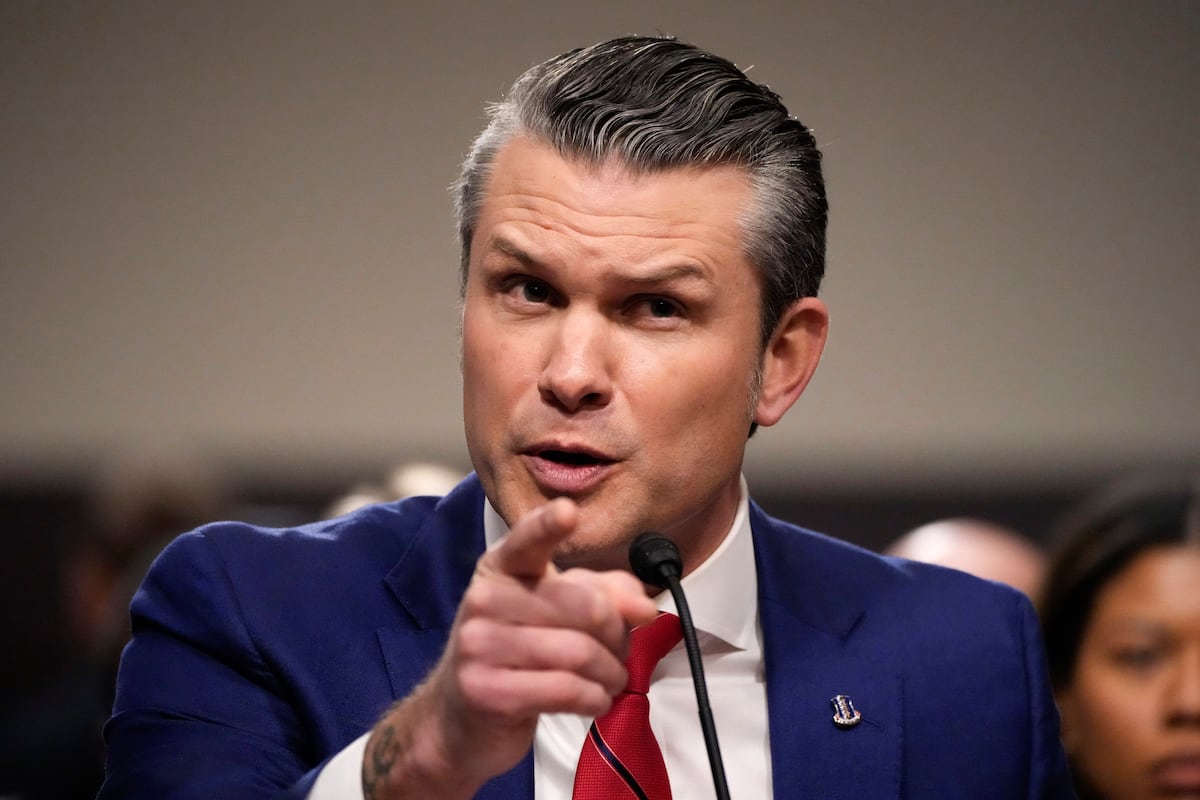RAMSTEIN AIR BASE, Germany–The members of the Ukraine-aid coordination group have agreed goals for production of arms and equipment for donation to the besieged country, the Pentagon’s acquisition chief said on Thursday.
That will enable national armaments directorates to make plans to provide weapons to Ukraine on a schedule, rather than in occasional pledges, William LaPlante, U.S. acquisition defense undersecretary, said in a conversation with reporters at the Ukraine Defense Contact Group meeting here.
Pledges, he said, are “interesting. But you gotta get real.”
The goals emerged from a year-long “capability coalition” effort to coordinate foreign military aid to Ukraine, build up the country’s own industrial base, and ensure that the newest equipment is moving to front lines. On Thursday, eight such coalitions, led by Ukraine and 14 donor nations, endorsed a series of roadmaps to guide aid through 2027.
The effort includes an “innovation group” to rapidly develop new weapons, LaPlante said.
“What are the new concepts for long-range strike? There’s a lot of emphasis on things like ATACMS or [UK’s] Storm Shadow. Well, that’s today. What can we build within a year, six months, that are equivalent of cruise missiles, long- range drones? What are each of our countries doing? What can we do inside Ukraine, tying it to the other groups?” he said.
It was the final Ukraine-group meeting convened by U.S. Defense Secretary Lloyd Austin, who will step down with the arrival of the Trump administration. President-elect Donald Trump has sent mixed signals, at best, about his approach to the international effort to support Ukraine.
Ukrainian President Volodymyr Zelenskyy urged the group to continue its work, even if U.S. leadership of the Ukraine support effort vanishes.
“It would honestly be crazy to drop the ball now and not keep building on the defense coalitions we’ve created, especially since they are already helping us grow and strengthen what’s basically our shared defense power,” Zelenskyy said at the meeting.
He highlighted Ukraine’s continued need for drones and other munitions.
“Production of drones in Ukraine is more cost-effective than anywhere else,” he said. “This year, we in Ukraine want to set a record for the number and quality of drones we produce and get from our from our partners, and we are focusing on drones that our brigades need to hold the front lines, and drones essential for ensuring security, like maritime drones and drones made for deep strikes on the enemy’s military facilities and infrastructure in their territory.”
Last month, Ukraine announced it had met its goal to build more than one million drones in 2024.
On Thursday, U.S. officials released details of a new $500 million package of arms to be drawn from stockpiles under in Presidential Drawdown Authority. The package includes:
- AIM-7, RIM-7, and AIM-9M missiles for air defense;
- Air-to-ground munitions;
- Support equipment for F-16s;
- Armored bridging systems;
- Secure communications equipment;
- Small arms and ammunition; and
- Spare parts, ancillary equipment, services, training, and transportation.
That $500 million figure leaves some $3.8 billion of PDA unspent, at the discretion of the incoming Trump administration.
Also on Thursday, Canadian Defense Minister Bill Blair announced that Canada would be contributing $100 million to help Ukraine build its own drones, a donation under the Danish model in which countries contribute to Ukraine’s domestic weapons manufacturing rather than pull from their stockpiles. Blair also pledged $200 million for a Czech initiative to procure munitions for Ukraine from various countries.
As well, the U.K. government pledged £190 million to help Ukraine acquire some 30,000 new drones.
Kaja Kallas, the European Union’s representative for Foreign Affairs and Security Policy (who arrived late at the meeting) told a small group of reporters over the phone that she could not speculate on the future of American leadership of Europe’s efforts to support Ukraine but the Union is “ready to take over this leadership if United States is not willing to do so.” She pointed out that the Union is on track to train some 75,000 Ukrainians by February.
Similar to Austin and other officials, Kallas framed the decision to continue support as one in the interests of the United States. “It’s also clear that whoever is the leader of the United States, I think, it is not in the interest of America that Russia will be the strongest force in the world.”
Trump has promised to push for some sort of negotiated ceasefire between Ukraine and Russia shortly after taking office on January 20, a promise his Ukraine special envoy pick re-iterated on Thursday. “He’ll be talking to [Russian President Vladimir] Putin and also…President Zelenskyy as well. And I think they’re going to come to a solvable solution in the near term.”
Kallas cast doubt on a Trump plan to negotiate a ceasefire with Russia. In a later discussion at Ramstein with reporters, she said. “Russia has no intention to keep those peace agreements.”
Read the full article here








Leave a Reply